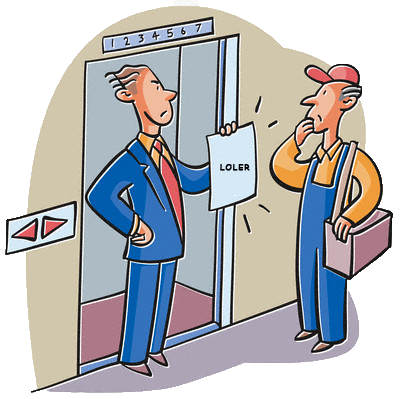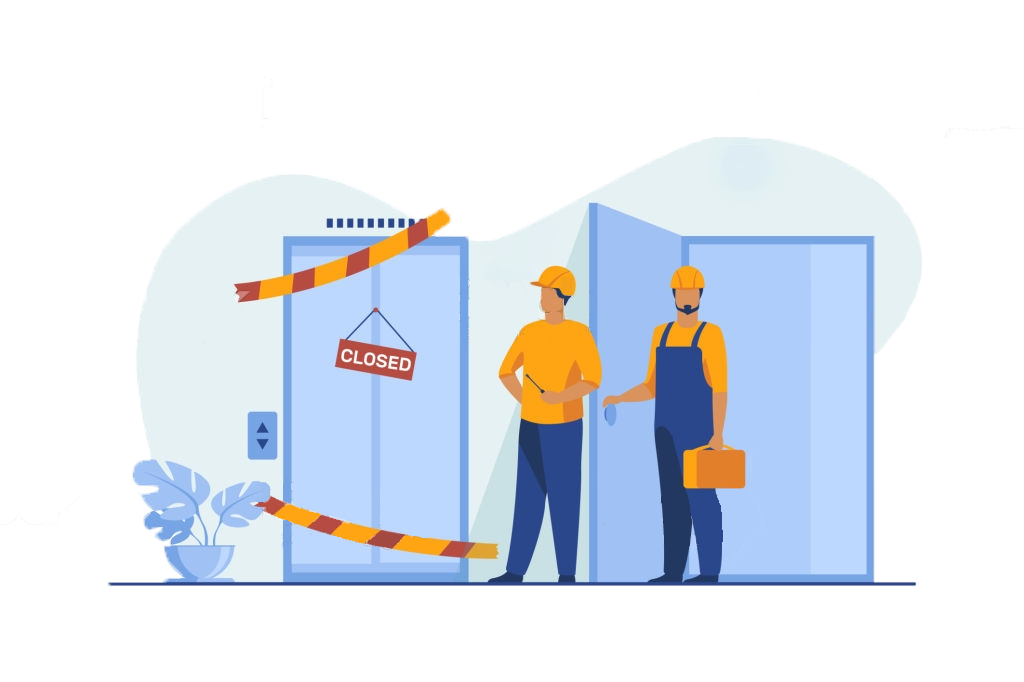Passenger - Goods - Traction Lift
Elevator technology has come on leaps and bounds over the years, but traction lifts have been a strong staple in the industry that show no signs of being left behind any time soon. With lower power consumption than hydraulic lifts and relatively high speeds, traction elevators have proven themselves to be a worthwhile investment on both a commercial and residential level. They work on a rope-and-pulley system with a counterweight at the end of what is usually a steel rope. They are looped around sheaves that are turned by an electric motor - however, conventional motor room and motor room-less models have some key differences:
CONVENTIONAL MOTOR ROOM TRACTION LIFT
Conventional traction lifts have long-since required room to house the motor that powers the elevator. For residential properties, this wasn’t always feasible, making traditional traction lifts only really ideal for commercial and public properties. In some cases, a residential property may have been built with a motor room as part of the design, in which case conventional motor room traction lifts are still available for replacement of old parts or elevator shafts. However, MRL (motor room-less) models are paving the way to installing traction lifts in homes across the world.
MOTOR ROOM-LESS
MRL traction lifts don’t require much room at all for the elevator’s power source - in fact, most geared and gearless MRL elevators can house the motor within the elevator shaft itself. Usually, the smaller motor is installed either at the bottom of the hoistway or on the top side wall. These elevators offer a hotel-style lift and a comfortable and smooth journey with minimal noise during operation and ever-improving precision when stopping at floors.
-
Geared - Geared motor room-less traction lifts use a gearbox with the electric motor in order to power and move the elevator car. They are usually powered by AC (Alternating Current) or DC (Direct Current) and are typically slower than gearless traction lifts, but also offer lower energy consumption overall. -
Gearless - Gearless traction elevators see the sheath wheel attached directly to the motor and can typically travel faster than a geared alternative though generally slower than motor-room models. For this reason, they are the typical choice for higher-rise buildings but do consume more energy during use.

Passenger - Goods - Hydraulic Lift
In a hydraulic system, there are two major components – a pump and a ram. The pump is usually (but not always) housed in its own cabinet and is sited near to the lift. It is powered by electricity. When the user presses the ‘Up’ button, the electric pump forces hydraulic fluid (oil) from a reservoir (tank), along a pipe (hose) to the ram which is situated between the lift guide rails. This pressurised fluid, forces a piston within the ram to extend in length and as it does so, the lift platform is pushed upwards. This self-lubricating drive method is efficient, smooth in operation and uses almost no energy when the lift is descending, as it relies only on gravity to close the ram and push the hydraulic fluid back to the tank. Hydraulic systems have some distinct advantages; firstly the lift can be easily lowered in the event of a power or equipment failure as you need only to manually open a valve at the pump end (like opening a tap). Secondly, as the pump is situated away from the lift, as opposed to being an integral part of it, the lift structure is very narrow and can fit into very tight spaces. Lastly, hydraulic drive units are supremely powerful, robust and reliable – you will have seen hydraulics on digger arms for example. They are generally underutilised on Platform Lifts and as such require minimal maintenance.

Thorough Inspections - LOLER
What are the specified intervals for regular thorough examinations?
Unless there is an 'examination scheme' specifying other intervals, thorough examinations should be conducted every:
- 6 months, for lifting equipment and any associated accessories used to lift people
- 6 months, for all lifting accessories
- 12 months, for all other lifting equipment
301: You should identify equipment which requires a thorough examination and ensure that it is thoroughly examined. The risks which could arise from the failure of the lifting equipment will determine how thorough the examination should be.

Supplementary Tests Of In-service Lifts
Appropriate tests and/or examinations called for by the competent person where concerns regarding the condition of equipment arise from the thorough examination. The purpose of the supplementary tests is to support the thorough examination in order to establish the equipment's suitability for continued safe use.
The Safety Assessment Federation (SAFed), in consultation with their members who carry out thorough examination and the LEIA, has published “Guidelines on the supplementary tests of in-service lifts” to provide guidance for those carrying out thorough examination and those carrying out the tests. The latest revision, Issue 4.1 was published in June 2020.
- 1 Yearly Inspections.
- 5 Yearly Inspections.
- 10 Yearly Inspections.

24hr Emergency Response Call Out
24 / 7 - 365days a year we're here to help.
F.A.Q
Frequently Asked Questions
-
Where do you cover?
We cover Cornwall & Devon and all surrounding areas. If you're outside of this area, please get in touch for a quick chat as this still may be achievable.
-
Are you're engineers trained?
Our lift engineers are trained and experienced to the highest of standards, ensuring the best quality of workmanship to your lift and/or stairlift.
-
Are you competitively priced?
We pride ourselves on the savings we've achieved our customers throughout Cornwall & Devon. Not only can we not be beaten on quality, but we wont be beaten on price.
-
What are some of the items you cover?
We can service, repair, maintain most lifting equipment throughout Cornwall & Devon, this includes but is not restricted to the following items:
- Passenger Lifts
- Platform Lifts
- Through The Floor Lifts
- High level access lifts
- Goods Lifts
- Stairlifts
- Dumb Waiters
- Ceiling Track Hoists
- Patient Hoists
- Tail Lifts
- Slings
-
I'm still under contract, can you help?
We're more than happy to still take care of your repairs, breakdowns & Loler examinations and/or insurance item repair works that are required to be carried out.
-
What times are you open?
We offer a full 24hr 7day a week call out to all of our contracted customers.
Office Hours are 8:30am to 16:30pm Mon - Fri.
Contact
Contact Us
Location:
15 Charles Street, St Austell, Cornwall, PL26 8PS
Email:
info@nextlevellifts.co.uk
Call:
01726 852000
24hr Emergency:
07399630180